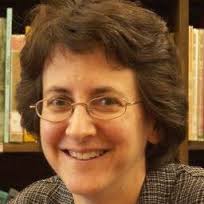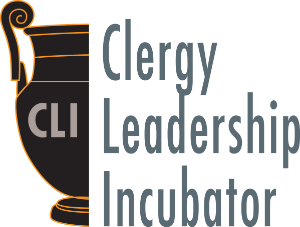Eight Principles that Drive Strong Congregations
 All congregational leaders are looking for the magic formula to success, the one that will ensure that their members are happy, engaged, and Jewishly fulfilled, and that their budgets are balanced. Though there’s no one-size-fits-all solution, there are a few tried-and-true organizational approaches to strengthening congregational life.
All congregational leaders are looking for the magic formula to success, the one that will ensure that their members are happy, engaged, and Jewishly fulfilled, and that their budgets are balanced. Though there’s no one-size-fits-all solution, there are a few tried-and-true organizational approaches to strengthening congregational life.
The URJ recently published the results of our initial round of Communities of Practice, which focused on three key areas of congregational life: engaging young adults, families with young children, and reimagining financial support. Through this work, we’ve identified several themes that are vital to congregational success – and we’ve compiled a few of those not-so-secretive secrets here.
1.Start with why
As leadership expert Simon Sinek said in his TED Talk, we need to start with “Why?” – and the answer must be more than just a desire to sustain our organization or our community. Rather, it must articulate what we are trying to achieve within our community. Some congregations say their “why” is to repair the self and the world; others seek to build communities that “do justice, love mercy, and walk humbly with God” (Micah, 6:8). Identifying your why, also known as your mission, will help your congregation determine what to do and how to do it, going beyond doing what you’ve always done and beginning instead to understand what you’re trying to achieve in your sacred community.
2. Be aware of the sacred
Leading a congregation differs from leading a corporation, small business, or even other types of non-profits. Because our congregations are sacred communities, our work is heightened and our mission takes on increased importance. Because our leaders sit in pews next to one another and our clergy may officiate at lay leaders’ weddings or visit them in their hospital beds, our relationships are much more intimate and complex than even those at other Jewish organizations.
3. Focus on best principles, not best practices
Everyone wants an easy answer – “Tell me what to do, and I’ll do it!” – but given congregations’ varied histories, cultures, demographics, physical spaces, and resources, no one solution will work for every community and, given the complex challenges presented by a rapidly changing world, simple plug-in solutions are unlikely to work for long. Instead, we work with “best principles” not “best practices”. Different congregations may implement a best principle in different ways. One example is the practice of giving a d’var Torah at board and committee meetings: The best principle is to bring the sacred to our deliberations, but many different practices can achieve this principle. Some congregations hold text study at their meetings; others ask board members to share stories about their Jewish identity; still others start with a blessing on the bimah and then move into another space for the meeting itself. Each one of these practices can bring Jewish text or ritual to leaders’ deliberations, and all illustrate the best principle of seeing leadership as a sacred task.
4.Experiment
Figuring out how to apply a best principle in your congregation will require you to try out a few different approaches to find a practice that works for you. For example, in the case of bringing the sacred to board meetings, you may try four different approaches in four different meetings and then discuss with the board which worked best. In an environment with unknown solutions and rapidly changing requirements, encouraging a culture of experimentation is critical to congregational success.
5.Bring participants into the process
When experimenting, involve participants in the process. A recently developed discipline called “design thinking” provides tools for incorporating the needs of participants into the design process (read more here and here). Co-creation in program areas such as social events, social action initiatives, education, and worship leads to greater ownership on the part of participants – which leads to greater involvement and a greater likelihood of achieving your mission.
6. Redefine success.
Many congregations seek to deepen congregants’ engagement – supporting relationship development, creating meaningful experiences, and having an impact on their lives, which in turn enables them to achieve their mission and have an effect on the world – all through the lens of Jewish tradition. Nonetheless, many congregations still define success by how many people attend, how well they stick to the budget, and how many attendees complain afterward (or not). If we want our congregations to be places of deep relationship, impact, and meaning, we must constantly explore and discuss new measures of success. (For more, check out the National Association for Temple Administration’s guide, “How Congregations Measure Success.”)
7. Work as a team
No one person can be responsible for a congregation’s success; it takes the talent and dedication of a team of people working together. There are many models of partnership among lay and professional leaders in congregational life, but in every case, the sweet spot of success lies somewhere between taking all the power for ourselves and delegating everything to others. For example, lay leaders, clergy, and staff can collaborate to discuss the goals of a program and then divvy up the responsibilities to implement it.
8. Look outside your building
One of the new best principles of congregational life is the trend toward cross-organizational collaboration, in which congregations host programming in partnership with other synagogues, Jewish institutions, and local JCCs and Federations. Similarly, congregations are taking some of their programming outside the synagogue walls – to congregants’ homes and public spaces – becoming more accessible to a wider swath of the Jewish community.
_______________________
Amy Asin leads the URJ’s Strengthening Congregations work, helping congregations remain effective, relevant, and sacred organizations, now and for future generations. Asin has been president of the board of her home congregation, Beth Am in Los Altos Hills, CA. She has an MBA with distinction from Harvard Business School and a BA in economics with high honors from Princeton University.
Is this post useful and interesting? Please consider sharing it with your social networks, and leave a comment below telling us your thoughts!

